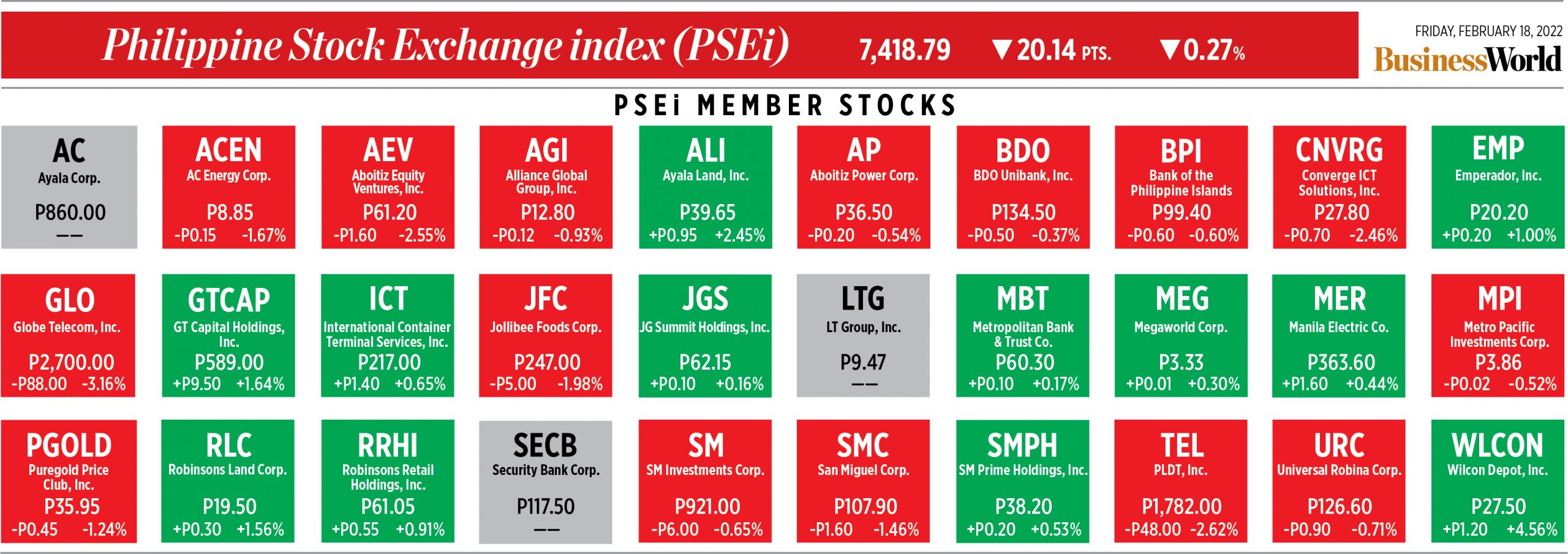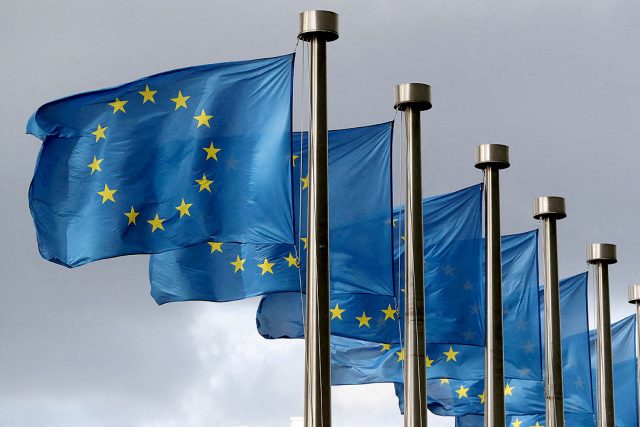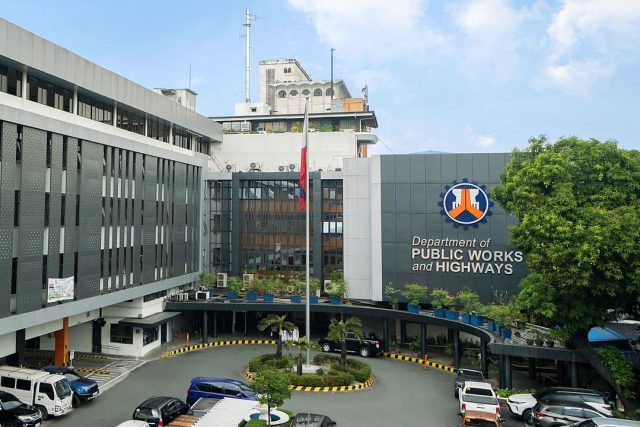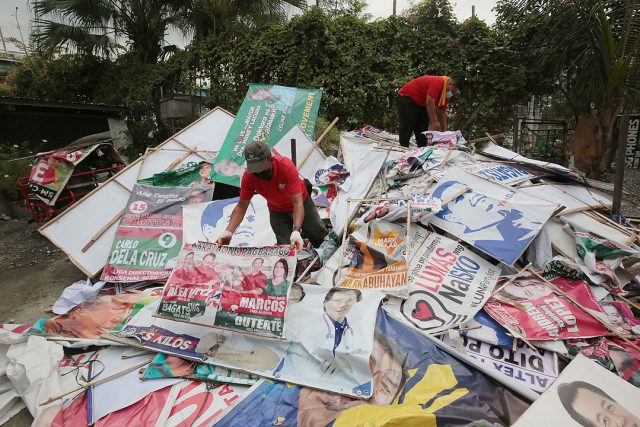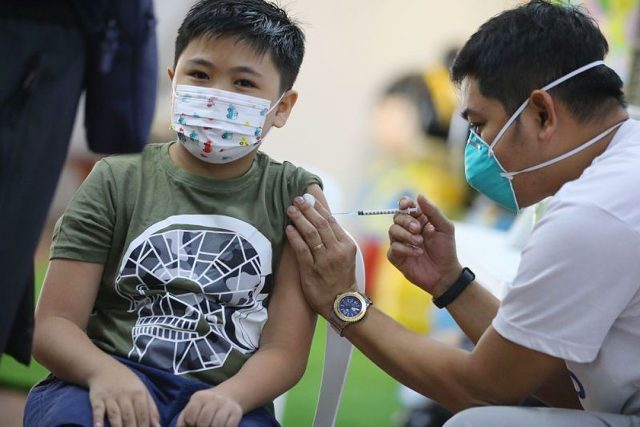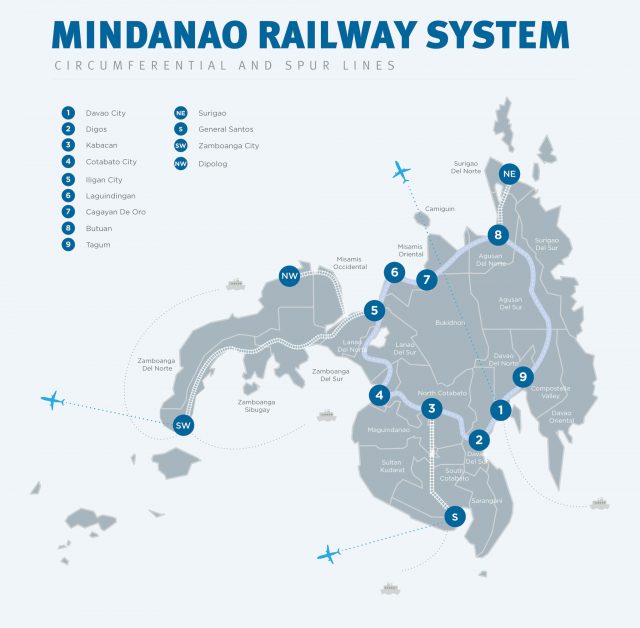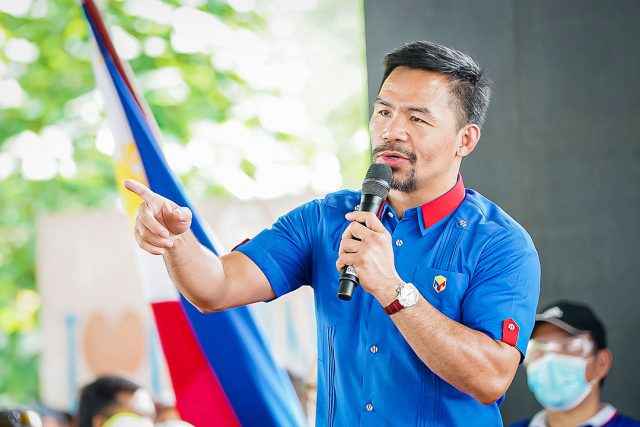EU withdrawal of GSP+ privilege not seen derailing PHL recovery
By Revin Mikhael D. Ochave, Reporter
THE LOSS of preferential market access to the European Union (EU) via its Generalized Scheme of Preferences Plus (GSP+) scheme is not expected to deal a major setback to the Philippine economic recovery, economists said.
University of Asia and the Pacific Senior Economist Cid L. Terosa said in an e-mail interview that the Philippines has the sovereign right to manage its internal affairs without external intervention or pressure.
“The EU is an important trade and economic partner, but the Philippines has other partners that do not share EU’s point of view. I don’t believe that EU by itself can derail the impending economic resurgence of the country,” Mr. Terosa said.
The EU requires GSP+ beneficiaries to sign on to various core international conventions regulating worker rights, illegal fishing, and environmental protection. Occasional disagreements over the government’s human rights record have led to threats that the Philippines might be denied GSP+ market access.
“For several years now, domestic forces have driven the economy forward and cushioned the impact of external fluctuations on the Philippine economy. External forces have played second fiddle to the power of the domestic market,” he added.
On Feb. 17, the European Parliament approved a resolution that called on the Philippine government to address violence and human rights violations or risk temporarily losing access to GSP+ trading arrangements.
The resolution also urged the Philippine government to amend Republic Act No. 11479, or the Anti-Terrorism Act and its implementing rules and regulations, to meet international standards on counter-terrorism.
“I wouldn’t say it will stall our economic recovery but it would reduce our exports and lower our investment prospects,” Foundation for Economic Freedom President Calixto V. Chikiamco said in a mobile phone message.
Trade Secretary Ramon M. Lopez said in a Viber message that the allegations of the EU on human rights are “fake news” and give a false impression of the Philippines.
“While it is not new, their allegations on human rights and lack of press freedom are fake news, and those only give false impressions on the real situation in the Philippines. They should visit our beautiful country,” Mr. Lopez said.
“They should ask the Filipinos in their companies or communities. They should also ask the EU citizens (and) the EU business chambers in the country,” he added.
GSP+ allows zero-tariff entry of more than 6,200 Philippine products to EU. The benefits of the GSP+ will apply as long as the country complies with 27 conventions. The trade agreement started in January 2014 and is set to end on Dec. 31, 2023.
Mr. Lopez said the Philippines continues to provide updates to the European Commission. A GSP+ monitoring mission is due to evaluate the Philippines at the end of the month.
“This process is more systematic and organized in obtaining accurate information regarding the real situation in the country. They get to visit as well the projects and the marginalized sectors that get to benefit from the EU GSP+ and other stakeholders,” Mr. Lopez said.
In a statement on Sunday, the Department of Trade and Industry (DTI) said an existing dialogue mechanism allows discussion and clarification of the human rights situation and other concerns.
“The Philippines has been very cooperative with the EU and has repeatedly addressed these concerns in existing dialogue mechanisms. The Philippines remains compliant with the 27 international core conventions on human rights, labor, environment and good governance to enjoy GSP+ treatment,” Mr. Lopez said.
Mr. Lopez also said that GSP+ helps micro, small, and medium enterprises, fisherfolk, farmers, and workers in the export value chain.
According to Trade Assistant Secretary Allan B. Gepty, the Philippines is willing to work with the EU to address its concerns.
“This is not the first time that the European Parliament approved such a resolution. The European Parliament also passed similar resolutions in 2016, 2017, 2018, and 2020. The Philippine government remains ready to cooperate and work with the EU to clarify these issues and concerns,” Mr. Gepty said.
Joseph F. Purugganan, Trade Justice Pilipinas co-convenor, said in a mobile phone message that the Philippine government is solely responsible for drawing scrutiny from the EU.
“We support strongly the demand… to initiate withdrawal procedures for GSP+ trade preferences to the Philippines. Our position is that the Duterte government, by failing to act on the human rights situation and failure to comply with the obligations under the GSP+ program, has forfeited these preferences. The blame falls squarely on the government,” Mr. Purugganan said.
The DTI said exports to the EU under GSP+ were valued at 1.6 billion euros in 2020, for a utilization rate of 75% on eligible exports.
“The scheme benefits several communities such as, but not limited to General Santos, Davao, Cebu, and economic zones located in Laguna, Cavite, and Batangas, where most exporters, taking advantage of the scheme, are located,” the DTI said.
Consultants sought for two S.Korea-backed projects
THE Department of Public Works and Highways (DPWH) said it is inviting consultants to bid for the South Korea-backed feasibility study component of two road projects in Pampanga and Bukidnon.
The department published in a newspaper over the weekend a “request for expressions of interest” for consulting services for the feasibility study of Lubao-Guagua-Sasmuan-Minalin-Santo Tomas Bypass Road, funded by the Philippines-Korea Project Preparation Facility or PK-PPF.
The project will allow motorists from Bataan to bypass congested town centers through to the Santo Tomas section of MacArthur Highway.
The DPWH is requesting similar expressions of interest for consulting services for the feasibility study of the Mount Kitanglad Range Belt Road in Bukidnon.
The DPWH said the documents for both contract packages must be received by the Bids and Awards Committee Secretariat on or before 9 a.m. on March 7.
The Department of Finance (DoF) announced in 2020 that South Korea will provide the Philippines a $50-million loan to fund the feasibility studies and other project preparation activities “necessary to speed up the implementation of the Duterte administration’s ‘Build, Build, Build’ infrastructure projects.”
The DoF and the Export-Import Bank of Korea (KEXIM) signed the loan agreement worth to P2.73 billion for the PK-PPF.
“This project preparation facility will have a total cost of about $71 million, of which $50 million will be accessed through the loan extended by KEXIM through South Korea’s Economic Development Cooperation Fund (EDCF),” the DoF said.
The balance will consist of Philippine counterpart funding.
“Aside from being a zero-interest loan, KEXIM granted the Philippines a repayment period of 40 years, inclusive of a 10-year grace period,” the DoF noted. — Arjay L. Balinbin
Comelec may stir up unrest with partisanship
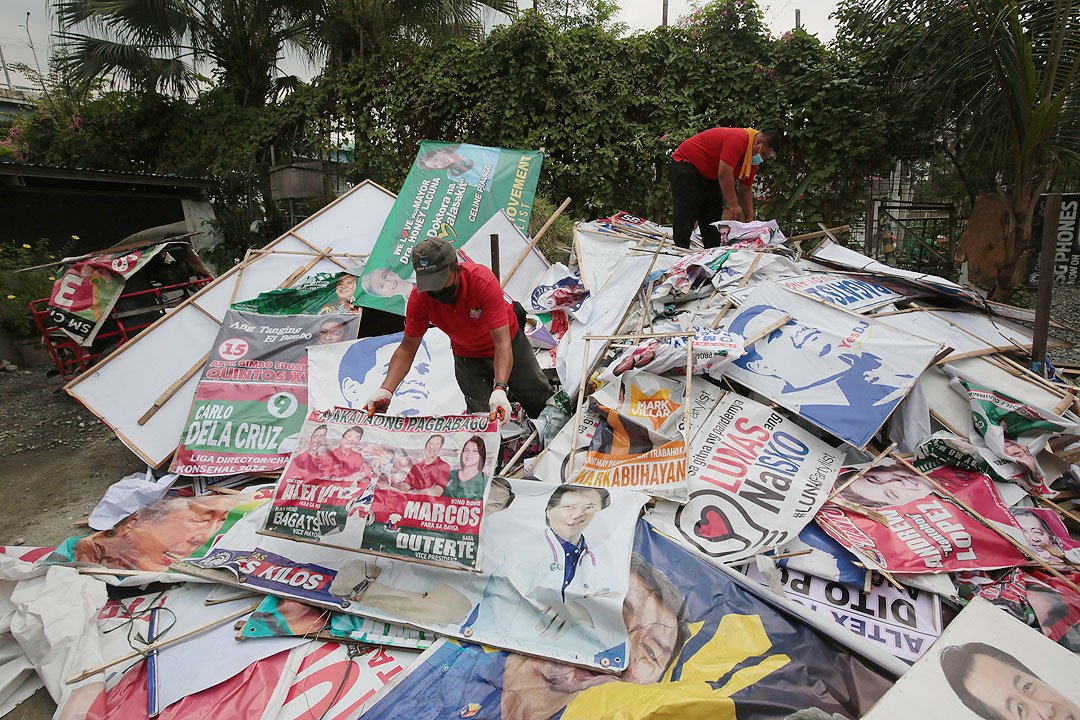
By John Victor D. Ordoñez
THE COMMISSION on Elections (Comelec) risks fomenting social unrest if it appears to favor some candidates in this year’s elections, political analysts said at the weekend.
Delays and allegations of meddling in the disqualification case against the son and namesake of the late dictator Ferdinand E. Marcos and last week’s taking down of campaign posters sent off “disquieting signals” that it may have partisan interests, said Gerard V. Eusebio, a political science professor at De La Salle University.
“They should explain these actions very well to show and assure the people that they are still the constitutional body that we could totally rely on,” he said in a Facebook messenger chat. “Otherwise, social unrest could be in the offing.”
“Comelec’s role is crucial, and like Caesar’s wife should be beyond reproach,” Mr. Eusebio said.
On May 9, Filipinos are choosing the replacement of President Rodrigo R. Duterte, who is barred by law from running for reelection and is limited to a single six-year term.
The election body last week ordered law enforcers to take down oversized campaign posters of some candidates — including Vice-President Maria Leonor “Leni” G. Robredo, who is running for president — on private property.
Citizens can put up whatever size of posters inside their property because freedom of speech is protected by the 1987 Constitution, election lawyer Romulo B. Macalintal told an online news briefing no Thursday.
Candidates could sue the election body at the Supreme Court for abuse of power, he said.
Civic groups and former Comelec officials have criticized a Comelec order that limits the size of election posters even on private property to six square feet. Candidates are also barred from shaking hands, hugging, kissing, going arm-in-arm and having selfies taken with political supporters as part of health protocols amid a coronavirus pandemic.
Videos and photos of authorities taking down campaign materials of some candidates have since gone viral on social media.
Comelec’s handling of these controversies is crucial, Marlon M. Villarin, a political science professor from the University of Santo Tomas, said in a Viber message, noting that Filipinos are closely watching the institution.
Fairness in enforcing election laws would be a make or break situation for Comelec, he said. “These controversies should serve as a lesson and reminder that Filipinos are watching. Comelec must at all times remain nonpartisan to keep its integrity and credibility.”
Mr. Villarin said some media failed to report that oversized campaign posters of candidates from different political parties had been taken down.
Comelec did not single out any candidates during the seizures, spokesman James B. Jimenez said last week.
“It has always been part of the practice of Comelec to ask for permission to enter, even in the last couple of days,” he said. “We do not go invade private spaces or residences for the purpose of enforcing our rules.”
The agency would review its policies he added.
Comelec’s First Division this month rejected three consolidated lawsuits seeking to have Ferdinand “Bongbong” R. Marcos, Jr. disqualified from the presidential race.
Victims of the late dictator’s martial law regime have asked the Comelec en banc to reverse the division ruling, saying the former senator’s conviction for tax evasion involved “moral turpitude.”
In the ruling written by Commissioner Aimee P. Ferolino, Comelec said Mr. Marcos’s failure to file his tax returns in the 1980s, for which he was convicted for tax evasion a decade later, did not involve wicked, deviant behavior.
Retired Comelec Commissioner Maria Rowena V. Guanzon had accused Ms. Ferolino of delaying the decision so her vote for disqualification would not be counted. She also said a senator from Davao was trying to meddle in the case.
Ms. Ferolino has denied the accusation.
“I don’t think the Marcos disqualification case would tarnish the credibility of Comelec so long as the decision is based on hard facts and jurisprudence,” Mr. Villarin said.
Carbon tax revenue potential could be ‘false hope’
By Marielle C. Lucenio
THE taxation of carbon emissions is not expected to be of much help in raising revenue to pay down foreign debt, analysts said.
While calling such a tax “laudable, timely… (and) consistent with our international commitments,” Tax Lawyer and Certified Public Accountant Kenneth L. Manuel told BusinessWorld in an e-mail that the promise of using such revenue to reduce foreign debt levels could be raising “false hope.”
Mr. Manuel estimated that a carbon emissions tax will raise the equivalent of 1% of the Bureau of Internal Revenue’s (BIR) collections.
“According to 2016 estimates, a carbon tax would give the government P20 billion in revenue. …Without the carbon tax, the BIR was able to collect P1.9 trillion in taxes in 2020. Hence, the imposition of carbon tax is only expected to generate roughly 1% of collections, and that’s just BIR. We have not yet factored in other revenue-generating government agencies such as the Bureau of Customs,” he said.
Speculation over new taxes arose over the weekend after Finance Secretary Carlos G. Dominguez III granted an interview with CNBC International TV on Friday. Reports emerging in the wake of the interview cited unnamed sources as saying that the government will be looking at “relatively untaxed” sectors of the economy.
When asked to comment, the Finance department told BusinessWorld it is still exploring various tax package options.
Raegan L. Capuno, tax lawyer at Siguion Reyna, Montecillo and Ongsiako Law Offices, said that consumers ultimately bear the burden of nearly all taxes.
“The challenge here is to determine the appropriate tax base for carbon tax imposition,” he said, adding that it is not the most feasible way to raise funds to pay down foreign debt.
Meanwhile, lawyer and energy and environmental policy Antonio M. La Viña said any carbon tax will be beneficial especially if focused on addressing environment, climate change, and revenue needs.
“The backlash will be if the carbon intensive companies pass it on to consumers so that must be prevented or regulated. Otherwise, a carbon tax is like a sin tax. Carbon emissions are bad for society and they should be treated like sin products — cigarettes and alcohol,” he said in a Telegram message.
The Philippines has committed to reducing its greenhouse gas emissions by 75% by 2030 under the Paris Climate Change agreement.
Coconut water firm sending trial shipment to China customer
A COMPANY exporting organic coconut products is sending a trial shipment of young coconut to China soon to meet growing demand, estimated at up to 300 40-foot containers monthly, according to the Department of Agriculture-Davao (DA-11) regional office.
The regional office’s marketing assistance team recently facilitated a meeting between a group of Chinese buyers and Cocowild Philippines, Inc. for the supply of young coconut, which is the source of fresh coconut water.
Cocowild representative Geralyn M. Hobrero said the company, based in Polomolok, South Cotabato, currently has two satellite facilities that can package young coconut at a volume of up to 18 container vans.
Ms. Hobrero said with the trial shipment, the company is seeking to verify whether it can comply with Chinese entry standards and the buyer’s quality requirements.
Apart from young coconut, the company also exports coconut sugar, coco syrup, and honey-cured vinegar.
Regional Executive Director Abel James I. Monteagudo said the DA agency is ready to provide further assistance to strengthen market linkages.
In 2019, Davao-based Eng Seng Food Products started exporting fresh young coconut to China, but could not meet the volume demand.
Davao Region was the third-biggest coconut producer in the country, according to September quarter data from the Philippine Statistics Authority. The top producing region was Calabarzon, followed by Northern Mindanao. — Marifi S. Jara
COVID infections fewer than 2,000 for second day
THE PHILIPPINES reported 1,712 coronavirus infections on Sunday — the second straight day the tally fell below 2,000 — bringing the total to 3.65 million.
The death toll hit 55,684 after 77 more patients died, while recoveries rose by 3,686 to 3.54 million, the Department of Health (DoH) said in a bulletin.
The agency said 8.8% of 28,500 samples from Feb. 18 tested positive for coronavirus disease 2019 (COVID-19), still above the 5% threshold set by the World Health Organization (WHO).
Of 60,532 active cases, 856 did not show symptoms, 55,102 were mild, 2,848 were moderate, 1,421 were severe and 305 were critical.
DoH said 94% of new cases occurred on Feb. 7 to 20. The top regions with cases in the past two weeks were Metro Manila with 316, Calabarzon with 221 and Western Visayas with 180 infections. It added that 66% of new deaths occurred in February and 26% in January.
It said 257 duplicates had been removed from the tally, 246 of which were recoveries, while 61 recoveries were relisted as deaths. Three laboratories failed to submit data on Feb. 18.
Infections might slightly increase as the Philippines accepts more foreign tourists, the OCTA Research Group from the University of the Philippines said.
“There could be upticks again,” OCTA fellow Fredegusto P. David said in a Facebook Messenger chat. “But we are not really expecting any significant increase at this time.”
He said the country’s healthcare system is more prepared now to handle a fresh spike in cases. “We have low hospitalization rates,” he said, noting that only a quarter of Metro Manila’s hospital system had been used.
The government has kept the capital region’s Alert Level 2 status until the end of February, as it reopens the economy.
The virus reproduction rate in Metro Manila was very low, while the positivity rate was moderate, Mr. David said, citing data from the Health department.
The capital region had an average daily attack rate of 3.19, which is also considered moderate.
The Philippines has relaxed the lockdown in many areas as it welcomes fully vaccinated foreign travelers to spur economic recovery.
Various countries have started easing restrictions amid observations that the heavily mutated Omicron variant, which was first detected in South Africa, might have peaked.
A drop in COVID-19 testing rates worldwide was likely contributing to a decline in reported cases in the world, even as deaths were rising, WHO technical lead on COVID-19 Maria Van Kerkhove said on Wednesday.
“The bigger concern right now, I think, is the still increasing number of deaths,” she told an online discussion streamed live on YouTube.
Ms. Van Kerkhove noted that in the past week alone, almost 75,000 people died, which was probably underestimated.
The coronavirus has sickened about 424 million and killed 5.9 million people globally, according to the Worldometer website, citing various sources including data from the WHO.
About 348.9 million patients have recovered, it added.
The United States had the most infections at 80.07 million with 959,130 deaths, followed by India with 42.82 million infections and 511,935 deaths.
They were followed by Brazil with 28.17 million infections and 643,938 deaths, France with 22,23 million infections and 136,594 deaths; and the United Kingdom with 18.58 million cases and 160,507 deaths.
Is a personality-and-platform campaign strategy changing voters’ minds?
PRESIDENTIAL ASPIRANTS have been striking a balance between highlighting their personal qualities and political platforms in the campaign, said political analysts, except for the candidate dominating pre-election opinion polls and surveys.
“I think that most of the candidates except one attempt to balance personality politics and platform-based campaigning,” Cleve V. Arguelles, a political science lecturer at De La Salle University, told BusinessWorld via Facebook Messenger.
He cited in particular Vice President Maria Leonor “Leni” G. Robredo as having a comprehensive pandemic recovery and economic plan as well as a track-record in delivering public service, but added that the same could be generally said for most of the other prominent candidates who are all incumbent officials in elected positions.
“The standout candidate, and who is really disappointing, is (Ferdinand “Bongbong” R.) Marcos Jr. whose campaign is driven purely by personality politics,” Mr. Arguelles said.
He noted that the popularity of Mr. Marcos is built on the legacies of his father, the late dictator Ferdinand E. Marcos, Sr., and their family’s prominence. “Despite talks about unity, it is very rarely discussed to what end is this desired national unity for.”
Despite the Marcos strategy, his competitors are not resorting to personal attacks as mudslinging no longer resonates with the electorate, according to Froilan C. Calilung, an assistant political science professor at the University of Santo Tomas (UST).
“So, it’s a case of a futile strategy, so if there is no traction and it will only backfire against them, why bother to continue it?” he told BusinessWorld in a Viber message.
He said no candidate would want to antagonize the voting public, which appears to be currently in control of the electoral exercise based on preference survey results indicating a lead for Mr. Marcos.
Ms. Robredo stands at a far second in most surveys. The other key contenders are: Manila Mayor Francisco “Isko” M. Domagoso, Senator Panfilo M. Lacson, and Senator Emmanuel “Manny” D. Pacquiao. Labor leader Leodegario “Ka Leody” Q. de Guzman, meanwhile, has been emerging as a dark horse.
“We can say that at this point, the voting public is able to run the show and not the other way around as in the previous elections,” the UST professor said.
If Mr. Marcos is chanting unity without concrete measures yet remains popular, Mr. Calilung said this may be an indicator that people have become “fed up with divisiveness that has pestered our political milieu from the time of Marcos until post-EDSA era.”
It may be that for voters, programs don’t necessarily have to be extensive, he added.
“In effect, the reality is that some good programs fail to take off because there is a lot of opposition to begin with,” Mr. Calilung said, “and sometimes, the opposition happens because it gravitates around the idea that it’s not that they don’t like the policy or the program, rather they just hate the proponent.” — Alyssa Nicole O. Tan
Shifting to a zero-trust mindset
As the world continues to operate under remotely while grappling with the pandemic, the danger of cyberattack remains a constant threat. The current situation has resulted in people using their own devices and networks to ensure business continuity from anywhere, but these are not as secure as corporate systems and connections, and cybercriminals are not letting these easy opportunities pass.
Data security is more critical than ever, with traditional data protection techniques functioning under a “trust but verify” strategy. This perimeter-driven paradigm entrusts its internal users with unobstructed network access and provides security controls only for external or untrusted networks. However, this introduces the issue of misplaced trust that can lead to the IT landscape of an organization being exposed to vulnerabilities.
With organizations dramatically accelerating their transformation journey, effective cybersecurity that expands beyond the organizations’ territories becomes even more significant — and this is where the concept of zero trust comes in.
Zero trust is a security model based on the principle of maintaining strict access controls without trusting anyone by default, including internal users. Everyone is trusted by default in a traditional IT network, and once an attacker gets inside the network, they are free to move and gain access to protected customer data, intellectual property, or network controls. Zero-trust application security understands that attackers can be present both within and outside of a network, which is why zero-trust policy enforcement dictates that no user should be trusted automatically.
With effective zero-trust frameworks in place, organizations can enforce several critical steps as part of their arsenal to reduce cyber risk while establishing access and identity controls.
THE NEED TO ADAPT ZERO TRUST
Newer organizations are now adapting this model as it requires a simpler approach but at the same time yields ever stronger security controls.
The “trust but verify” strategy is no longer an option as targeted, more advanced threats are now capable of moving inside the corporate perimeter. Because of the nature of remote working, accessing applications from multiple devices outside of the business perimeter has become even more prolific. This results in the increasing risk of exposure to data breaches, malware and ransomware attacks.
The zero-trust paradigm requires organizations to continuously analyze and evaluate the risks that involve their business functions and internal IT assets, then form strategies to mitigate them. The zero-trust model also restricts access by only providing access to users who need it while depending on whether they successfully authenticate each access request. The purpose of this process is to help eliminate unauthorized access to services and data while employing a positive security enforcement model. Because it uses a different lens to view data protection, the zero-trust model allows certain criteria that govern access and restrictions.
STEPS TO START THE ZERO-TRUST JOURNEY
The looming challenge for these organizations actually involves where to start. They can begin their zero-trust journey with three simple steps, starting with building a zero-trust center of excellence. This entails creating a cross-functional working group of all the teams that will be working together on a zero-trust architecture. This includes cybersecurity and IT teams that will handle actual deployment, as well as business leaders who will help define the necessary business objectives to ensure successful implementation.
Second, the center of excellence will need to engage in workshops to ensure that everyone is aligned and understands the basic concepts of this model, the business objectives of the organization, and what to protect — data, applications, assets, and services (DAAS). The prototype zero-trust network can be planned during the workshop to allow IT and security practitioners in the organization to better move to a more formal design phase.
Third, start with something low-risk, instead of proceeding ahead with the “crown jewels” of the organization. Deploy zero trust first in an environment where implementation teams can get hands-on experience and develop confidence as they build this simpler but more secure network.
MAXIMIZING DATA SECURITY WITH ZERO TRUST
While there are many misconceptions surrounding the zero-trust architecture model, from its overall functionality to implementation, organizations can focus on five major aspects identified by Murali Rao, EY India Cybersecurity Consulting Leader, to better maximize their data security.
Prioritize top risks. Organizations must understand the attack surface and threat landscape to qualify risks, before prioritizing the ones that will need the most focus.
Enterprise-wide policy. Organizations will need to set policies according to the sensitivity of services, assets and data housed. The potential of zero-trust architecture relies on the access policies that organizations define.
More granular network enforcement. Organizations must always assume that the network is hostile, and that they cannot trust any user or incident. This will mean removing implicit trust from the network and building trust into devices and services.
Implement the zero-trust network based on an inside-out view. Organizations need to include zero-trust architecture as part of their overall transformation strategy. They will also need to implement technologies that help achieve zero trust as their transformation moves them more to the cloud and retires old legacy systems.
A strong Identity and Access Management. Organizations need to work on the authentications of their workloads, devices and users. Technologies such as privilege ID management, multifactor authentication, behavioral analytics and file system permissions must be enforced based on defined rules to minimize the compromise of trust.
THE KEY TO SUCCESSFUL ZERO-TRUST ARCHITECTURE ADOPTION
Breaches that result in lost or stolen data cost organizations significant financial and reputational damage. The zero-trust model aids in both simplification and standardization of access control enforcement across an enterprise with improved compliance and the continuity of critical business processes, and it is most effective when integrated across the entire digital IT estate.
In an era where customers, partners and the supplier ecosystem access data and services from literally anywhere, applying a zero-trust model reduces the risks of security issues that arise due to how organizations often lean on perimeter-based approaches.
This article is for general information only and is not a substitute for professional advice where the facts and circumstances warrant. The views and opinions expressed above are those of the author and do not necessarily represent the views of SGV & Co.
John N. Panes is a manager from the Technology Consulting practice of SGV & Co.
Future of railway, bridge projects in Mindanao at stake in May election
TWO big-ticket projects in Mindanao under the centerpiece infrastructure program of the Duterte administration, which is exiting by June 30, have yet to break ground and their future now lies in large part on the new leaders who will be elected in May.
“The new government will have a big role as they will play a big part in the continuance of the big-ticket projects in Mindanao,” Secretary Mabel Sunga-Acosta, chair of the Mindanao Development Authority (MinDA), said in a virtual briefing on Thursday as the agency celebrated its 12th anniversary.
These projects are the Mindanao railway and the Samal Island-Davao City bridge, both to be financed under loan deals with China.
“It will be the main agenda of MinDA to push for these big-ticket projects,” Ms. Acosta said, noting that transport connectivity is crucial in the development and economic growth of the country’s southern islands.
“We need connectivity within Mindanao and with other areas in the Philippines and BIMP-EAGA,” she said, referring to the Brunei-Indonesia-Malaysia-Philippines East ASEAN Growth Area.
MinDA Deputy Executive Director Romeo M. Montenegro said the railway is moving along in terms of land acquisition through funds allocated under the national budget, but this only covers the first 100-kilometer segment across the cities of Tagum, Davao, and Digos.
In January, the Transportation department said China is expected to give its short list of bidders for the first segment construction within the first quarter this year.
“This has a government counterpart under the General Appropriations Act. As announced by the Department of Transportation, the Mindanao Railway Project, particularly TDD (Tagum, Davao, and Digos) segment, is going to be started,” he said.
The entire Mindanao Railway Project is envisioned as an 830-kilometer circular train system with over 700 kilometers of spur lines that will run around the entire southern mainland.
For the bridge that will connect Samal, a popular tourist destination, to mainland Mindanao through Davao City, Mr. Montenegro said the government has started to issue notices of taking to property owners on the Davao side.
“The Samal side none yet because this will have to be anchored on the finalization of the loan agreement between the Department of Finance (DoF) and Chinese counterpart. Once that agreement is firmed up and signed, that will already set into motion among other specific activities that will be undertaken for the start of the project,” he said.
He said the DoF — along with the National Economic and Development Authority and the Department of Public Works and Highways — are still aiming to finalize the “specific details” of these priority projects before President Rodrigo R. Duterte steps down.
“We still have between now until June 30,” he said. — Maya M. Padillo
Pacquiao calls for crackdown on smuggling of over-the-counter drugs, not small neighborhood stores
SENATOR and presidential candidate Emmanuel “Manny” D. Pacquiao, Sr. on Sunday called on authorities to go after smugglers of over-the-counter medicines rather than clamping down on neighborhood retail shops.
“We need to restrict the entry of counterfeit drugs and small miscellaneous stores should not be oppressed. No counterfeit can be sold if none can enter,” the retired boxing champion said in a statement in Filipino.
“We just need to implement our generic (medicine) law well so that it will make cheap but effective drugs accessible,” he said.
The Department of Interior and Local Government (DILG) recently announced that it will launch a campaign to stop small shops, commonly known as sari-sari stores, from selling nonprescription medicines.
Mr. Pacquiao suggested that sari-sari stores can just be required to submit a list of drugs they are selling to their barangay units for monitoring.
Restricting these convenience shops from selling over-the-counter medicines — for such ordinary ailments like flu, diarrhea or stomach ache, and body pains, — is “anti-poor and very impractical for rural folks,” he said.
“Not everyone is close to drug stores… Not everyone has a car to go to town to buy medicine at night,” he added.
From Jan. 13 to Feb. 11, the Food and Drug Administration (FDA) received 185 reports of sari-sari stores allegedly selling nonprescription drugs, with 78 already confirmed guilty. Nine of these stores were also found to be selling fake medicines, including those supposedly intended for treatment of coronavirus disease 2019 (COVID-19).
Under the law, only FDA-licensed retail drug outlets or pharmacies are allowed to sell drugs and medicine to the public. — Alyssa Nicole O. Tan
Chief justice rallies judges to tap technology to improve Philippine legal system
THE COUNTRY’S chief justice has urged judges to adopt technological innovations to improve the Philippine legal system, citing in particular the important role of first-level courts as “frontliners” of the judiciary.
“Technology is very important, with your support, we will be able to achieve these innovations that we want to introduce,” Chief Justice Alexander G. Gesmundo said in a statement on Feb. 18 after leading the oath-taking of the newly appointed officers and directors of the Philippine Judges Association (PJA).
Mr. Gesmundo noted that he has been pushing for technology-driven court processes such as online filings and hearings since his appointment last year.
“We might say that the ambition of the Court is hard to reach but if we decide and we have the will, we can do it,” he said.
The Supreme Court chief stressed that municipal and metropolitan trial courts are the first stop of litigation and their performance reflects the entire judicial system.
“As frontliners, ideally and under normal circumstances, you are the first contact persons of the litigants, especially the first level courts,” Mr. Gesmundo said. “For that reason, we must assure that people transacting with the court involving cases must be satisfied with the way you are doing things at the trial court, because if they are frustrated it reflects on the entire Judiciary.” — John Victor D. Ordoñez


